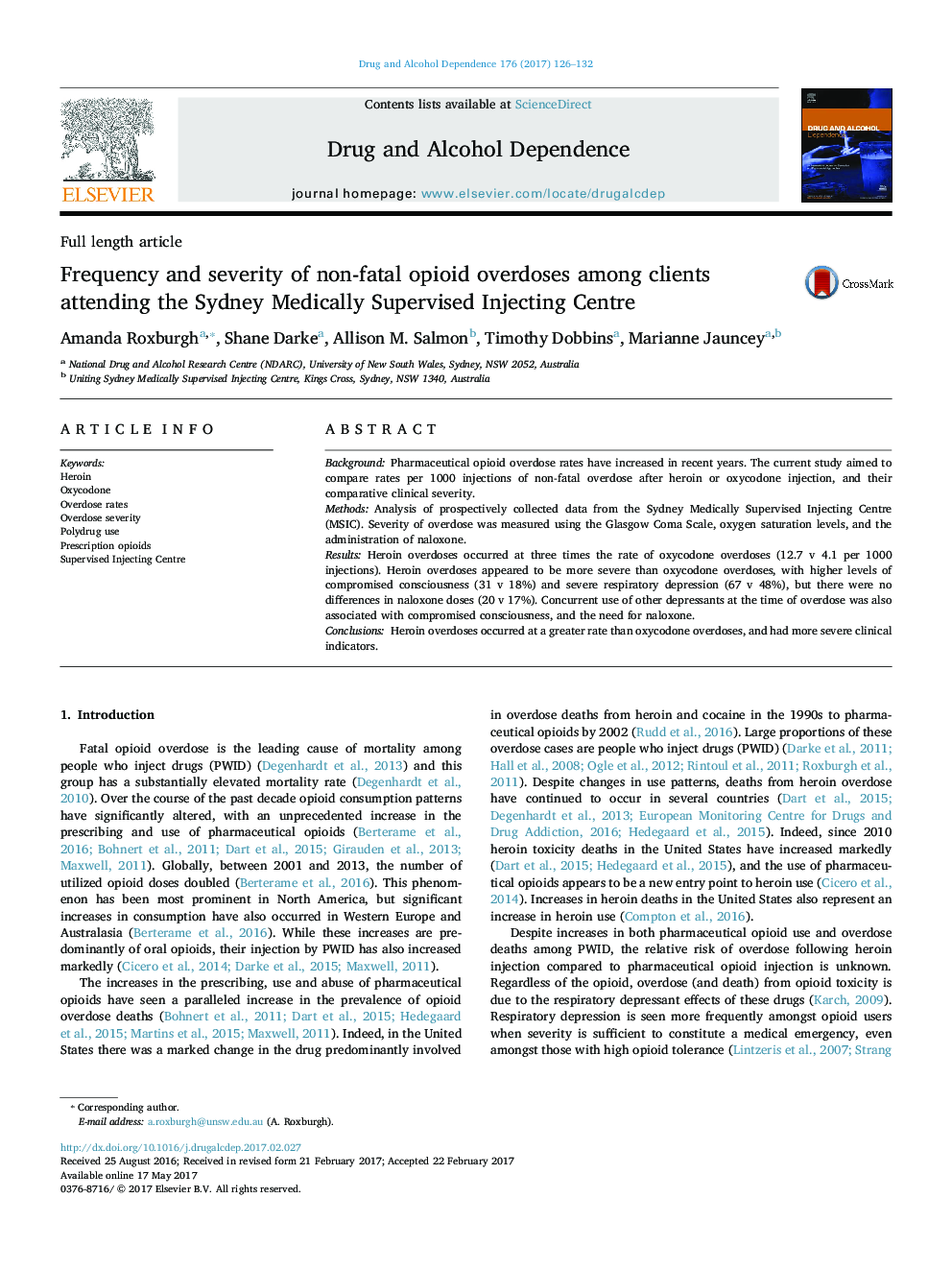| Article ID | Journal | Published Year | Pages | File Type |
|---|---|---|---|---|
| 5120004 | Drug and Alcohol Dependence | 2017 | 7 Pages |
â¢Heroin overdose (OD) rate was 12.7 ODs per 1000 injections, or approx. 1 in every 80.â¢Oxycodone OD rate was 4.1 ODs per 1000 injections, or approx. 1 in every 250.â¢Heroin injections three times more likely than oxycodone injections to result in OD.â¢Heroin ODs demonstrated a more severe clinical profile than oxycodone ODs.â¢Concurrent use of other depressants a consistent predictive factor for greater severity of OD.
BackgroundPharmaceutical opioid overdose rates have increased in recent years. The current study aimed to compare rates per 1000 injections of non-fatal overdose after heroin or oxycodone injection, and their comparative clinical severity.MethodsAnalysis of prospectively collected data from the Sydney Medically Supervised Injecting Centre (MSIC). Severity of overdose was measured using the Glasgow Coma Scale, oxygen saturation levels, and the administration of naloxone.ResultsHeroin overdoses occurred at three times the rate of oxycodone overdoses (12.7 v 4.1 per 1000 injections). Heroin overdoses appeared to be more severe than oxycodone overdoses, with higher levels of compromised consciousness (31 v 18%) and severe respiratory depression (67 v 48%), but there were no differences in naloxone doses (20 v 17%). Concurrent use of other depressants at the time of overdose was also associated with compromised consciousness, and the need for naloxone.ConclusionsHeroin overdoses occurred at a greater rate than oxycodone overdoses, and had more severe clinical indicators.
